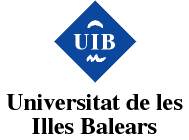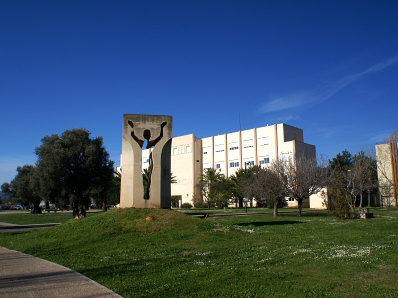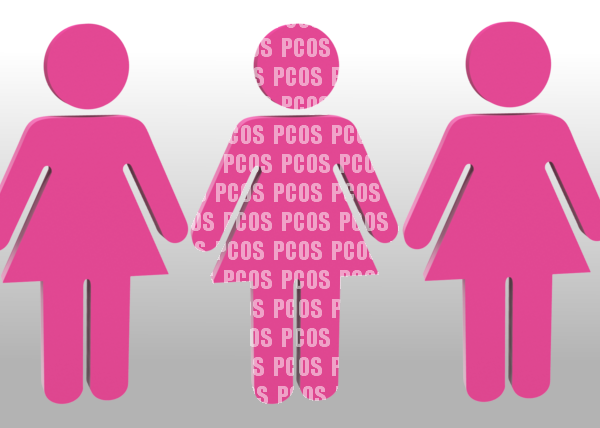Presentació
L’any 2011 la Societat d’Onomàstica va encetar un nou format en la concepció dels
col·loquis sobre onomàstica que, des de 1980, i a iniciativa del seu secretari general,
Enric Moreu-Rey, promovia arreu del domini lingüístic de forma ininterrompuda.
Aquest nou format implicava un desdoblament del tipus de convocatòria: d’una banda,
es tractava de mantenir la periodicitat pràcticament anual assolida pels antics col·loquis,
mitjançant la realització d’una Jornada d’Onomàstica, concentrada en un sol dia i amb
una àmplia capacitat d’adaptació a entorns geogràfics de grandària diversa; d’altra
banda, es va considerar oportú desenvolupar, també, una activitat acadèmica en forma
de congrés, temàticament orientat, i que es pogués organitzar cada tres anys. Així,
doncs, des de la data esmentada s’han dut a terme tres Jornades (Lloret de Mar, 2010;
València, 2012; Esterri d’Àneu, 2013) i un primer Congrés de la Societat d’Onomàstica,
que es va celebrar amb gran èxit a Barcelona el setembre de 2011 i que va coincidir amb
la Secció 12 del XXIV Congrés Internacional de Ciències Onomàstiques (ICOS-24);
a l’efecte, convé recordar que el tema general va ser Els noms i la vida quotidiana, i que
l’enunciat identificador de la Secció 12 va ser «Onomàstica catalana».

Pertoca, ara, donar continuïtat a aquestes iniciatives mitjançant la convocatòria d’un II
Congrés de la Societat d’Onomàstica, que escau de realitzar a Manacor, Mallorca, els
dies 24 i 25 d’octubre de 2014, organitzat per la Universitat de les Illes Balears amb la
col·laboració de l’Ajuntament de Manacor, i que adopta com a divisa l’enunciat general
d’Onomàstica i identitat, un repte universal i multiescalar. En aquest context, convidam tots
els estudiosos, investigadors i interessats en les ciències onomàstiques a seguir la
present crida i a donar suport, mitjançant les seves contribucions o bé a través de
la seva assistència, a allò que volem que sigui, al cap i a la fi, la trobada científica
per excel·lència del món onomàstic català i una ocasió privilegiada per comunicar i
intercanviar experiències i punts de vista per part de tots els qui, d’una manera o d’una
altra, hem assumit l’estudi dels noms propis, de lloc o de persona, com un univers amb
entitat pròpia.
D’altra banda, en oferir Manacor com a seu del congrés, hem volgut honorar la figura
d’un il·lustre fill d’aquesta terra, Antoni M. Alcover, filòleg que ha estat especialment
recordat amb la commemoració de l’Any Alcover 2012, dedicat a la seva figura, amb
motiu del 150è aniversari del naixement. L’empenta d’aquest any continua encara per
conèixer i divulgar la vida i l’obra d’un dels principals investigadors i defensors de la
llengua catalana i, alhora, un dels primers impulsors dels estudis onomàstics catalans.
Aprofitam, també, l’ocasió per incloure en el marc d’aquest II Congrés de la Societat
d’Onomàstica la celebració, corresponent a 2014, de la XXVII Jornada d’Antroponímia
i Toponímia, reunió científica i interdisciplinària de seu itinerant que el Gabinet
d’Onomàstica del Servei Lingüístic de la UIB, juntament amb el Departament de
Ciències de la Terra i el Departament de Filologia Catalana i Lingüística General,
organitza anualment. Els treballs i aportacions que s’hi presenten i queden recollits
en diversos volums que constitueixen una col·lecció de referència pel que fa a la
investigació en onomàstica i toponímia al nostre país, en aquesta ocasió formaran part
de les actes del II Congrés de la Societat d’Onomàstica.

Enunciat general i línies temàtiques
L’enunciat general descrit, Onomàstica i identitat, un repte universal i multiescalar, apunta a
un camp de la recerca onomàstica que ha tingut un desenvolupament significatiu al
llarg dels darrers anys: el camp, concretament, que posa en relació els noms propis,
considerats en la dimensió àmplia de l’expressió, amb les qüestions relatives a la identitat
de la persona, entenent aquesta identitat en un sentit tant individual com col·lectiu.
Els organitzadors del congrés entenem que és interessant i oportú, a més de necessari,
obrir en aquests moments un debat científic que vulgui abordar sense complexos la
multiplicitat de qüestions que pot suscitar l’estudi dels noms propis com a expressions
d’identitat. Fins a quin punt són els noms propis –topònims, antropònims i altres
ònims– «marques» d’identitat? En quina mesura la representen o la personifiquen?
Quins patrons generals trobam, respecte de les relacions d’identitat, a l’onomàstica dels
territoris de parla catalana? Aquests patrons canvien quan consideram altres territoris?
Com varien aquests patrons en funció de l’escala i en funció de l’àmbit temàtic? Fins
a quin punt la identitat, en onomàstica, està condicionada per la llengua o les llengües
que han incidit en la formació del topònim/antropònim? I un llarg etcètera.
Sobre la base de l’enunciat general, suggerim a continuació algunes línies temàtiques
que poden ser útils per orientar les comunicacions a presentar al congrés i sobre les
quals es desenvoluparan les respectives ponències:
1. Paisatge, onomàstica i identitat
2. Els antropònims com a claus d’identitat
3. L’aportació de mossèn Alcover a l’onomàstica catalana
4. Onomàstica de les illes Balears: de la microescala a la macroescala
5. Toponímia i noves tecnologies: reptes, oportunitats i perills
Programa
El congrés tindrà lloc a Manacor els dies 24 i 25 d’octubre de 2014, a la seu de la
Institució Pública Antoni M. Alcover (Casal de can Socorrat, carrer del Pare Andreu
Fernàndez, 12,
www.institucioalcover.org).
Les sessions s’organitzaran en ponències, desenvolupades de forma equitativa al
llarg dels dos dies de congrés. Si el nombre de comunicacions ho fes aconsellable,
les ponències es desenvoluparien en sessions paral·leles. Hi haurà una conferència
inaugural titulada «Antoni M. Alcover i la importància de l’Onomàstica», a càrrec de M.
Magdalena Gelabert (Institució Pública Antoni M. Alcover). Així mateix, l’organització
preveu oferir als assistents interessats un itinerari pel nucli urbà de Manacor.
El detall del programa i dels actes prevists s’oferirà a les properes circulars.
Propostes de comunicació
Les propostes de comunicació al congrés s’han de fer arribar per correu electrònic a la
Secretaria d’organització
congres.onomastica@uib.cat,
des d’ara i fins a l’1 de març
de 2014 (termini ampliat fins a l’1 d’abril). Els interessats hi han d’indicar les seves
dades personals (nom complet, adreça de correu electrònic i domicili), i hi han d’incloure
un text (format Word) amb el títol i el resum de la comunicació, d’una extensió màxima
de 250 paraules. Les propostes seran avaluades pel comitè científic, que es pronunciarà
sobre la seva acceptació durant el mes de març. El període d’inscripció al congrés
s’obrirà l’1 d’abril, i la data límit d’inscripció per als comunicants és el 15 de juny, i el 30
de setembre per als assistents. Posteriorment a aquesta darrera data, excepcionalment
es podran admetre inscripcions d’assistència si no s’ha superat la cabuda de la sala.
L’assistència al congrés és previst que sigui gratuïta per als socis de la Societat
d’Onomàstica i membres de la comunitat universitària de la UIB. Per a la resta de
participants,
el preu és de 20 euros (termini d’inscripcions obert fins al dia 1 de maig). A la segona circular s’actualitzarà la informació i es proporcionarà el programa definitiu, així com s’indicarà la forma de pagament. La
inscripció no inclourà allotjament, manutenció ni desplaçaments al lloc de celebració.
La informació sobre les diferents possibilitats de desplaçament i transport fins a
Manacor, així com també sobre les opcions d’allotjament en el lloc, es pot consultar a
la web
www.visitmanacor.com.
L’organització es reserva la facultat de fixar un nombre màxim d’inscrits al congrés, si
les necessitats ho fan aconsellable.
Publicació
Es preveu la publicació de les comunicacions una vegada acabat el congrés. La
publicació serà digital, amb format de llibre electrònic (amb ISSN), i es farà a través
d’un enllaç amb la pàgina web
www.slgonomastica.uib.cat.
Els comunicants que hagin defensat la seva comunicació hauran de trametre la versió
final del text abans del 15 de desembre de 2014. De cara a aquesta versió final, els
autors s’hauran d’ajustar a les instruccions formals i tècniques que trobaran a l’adreça
www.slgonomastica.uib.cat.
Les comunicacions seran publicades després d’un procés d’avaluació realitzat per un
comitè de redacció que vetllarà per l’adequació general dels textos que vagi rebent amb
vista a la seva edició. Aquest comitè estarà facultat per suggerir als autors els canvis que
consideri adients, i per decidir, en cas de dubte, sobre la idoneïtat de la inclusió dels
textos a la publicació final.
Coordinadors del congrés
Antoni Ordinas
Miquel Grimalt
Comitè organitzador
Antoni Ordinas (Dept. de Ciències de la Terra, UIB, Societat d’Onomàstica)
Miquel Grimalt (Dept. de Ciències de la Terra, UIB, Societat d’Onomàstica)
M. Magdalena Gelabert (Institució Pública Antoni M. Alcover, Ajuntament de
Manacor)
Joan A. Mesquida (Dept. de Filologia Catalana i Lingüística General, UIB)
Maribel Ripoll (Dept. de Filologia Catalana i Lingüística General, UIB)
Rosa Calafat (Servei Lingüístic, UIB)
Francisca Latorre (Gabinet d’Onomàstica, Servei Lingüístic, UIB)
Jaume Binimelis (Dept. de Ciències de la Terra, UIB)
Comitè científic
Joan Tort
Climent Picornell
Joan Miralles
Emili Casanova
Antoni Ordinas
Miquel Grimalt
Rosa Calafat
Albert Turull

















 References
References












